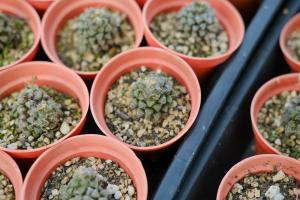How do Plants Drink Water Video
Plants are essential for our survival. They are the primary producers in our ecosystem, and they provide us with the oxygen we need to breathe. However, have you ever wondered how plants get the water they need to grow? In this article, we will discuss the theory behind how plants drink water and explore the mechanism in more detail, all thanks to the "How do Plants Drink Water Video" we'll be analyzing today.
The Process of Photosynthesis
The process of photosynthesis is crucial for the survival of plants, and it occurs in the chloroplasts of the plant cells. In simple terms, it's the process by which plants convert light energy into chemical energy stored in the form of glucose. Water plays a crucial role in this process. It's the source of electrons that are required for the photosynthetic process to take place.
The "How do Plants Drink Water Video" explains that water molecules are split into oxygen and hydrogen ions inside the chloroplasts in the process of photosynthesis. The oxygen is released into the atmosphere, and the hydrogen ions are used to produce ATP, a form of energy that the plant can use to fuel its cellular processes.
The Role of Roots in Water Uptake
But, how do plants get the water they need to carry out photosynthesis? The answer lies in the roots of the plants. The root system of a plant is responsible for absorbing water from the soil. This is achieved through the root's various adaptations, such as the presence of root hairs that increase surface area and absorb water more efficiently. The root's ability to take up water is vital to plant survival, as it allows for the maintenance of the plant's turgor pressure.
In the "How do Plants Drink Water Video," we see that water first enters the plant through the root hairs. From there, it travels through the cortex of the root before it reaches the plant's xylem. The xylem is a series of tubes that run from the roots to the leaves, and its primary function is to transport water and dissolved minerals throughout the plant.
The Importance of Transpiration
Once the water reaches the leaves, it's lost to the atmosphere through a process called transpiration. Plants lose water through small openings on their leaves called stomata. These openings allow for the exchange of gases necessary for photosynthesis but also increase the plant's rate of water loss. Transpiration is a necessary process for plant survival, as it allows for the movement of water and dissolved minerals throughout the plant.
The "How do Plants Drink Water Video" demonstrates that factors such as temperature, humidity, and wind can all affect a plant's rate of transpiration. For instance, high temperatures and low humidity levels can increase the rate of transpiration, leading to a higher rate of water loss from the plant.
Conclusion
Understanding how plants drink water is vital to our understanding of the natural world. The "How do Plants Drink Water Video" gives us a fascinating insight into the mechanisms behind this process, from the role of roots in water uptake to the importance of transpiration. It's clear that water is a vital component in the survival of plants, and without it, photosynthesis cannot occur. So, the next time you witness a beautiful plant, remember the incredible mechanisms that allow it to thrive.

 how many times do yo...
how many times do yo... how many planted tre...
how many planted tre... how many pine trees ...
how many pine trees ... how many pecan trees...
how many pecan trees... how many plants comp...
how many plants comp... how many plants can ...
how many plants can ... how many plants and ...
how many plants and ... how many pepper plan...
how many pepper plan...






























